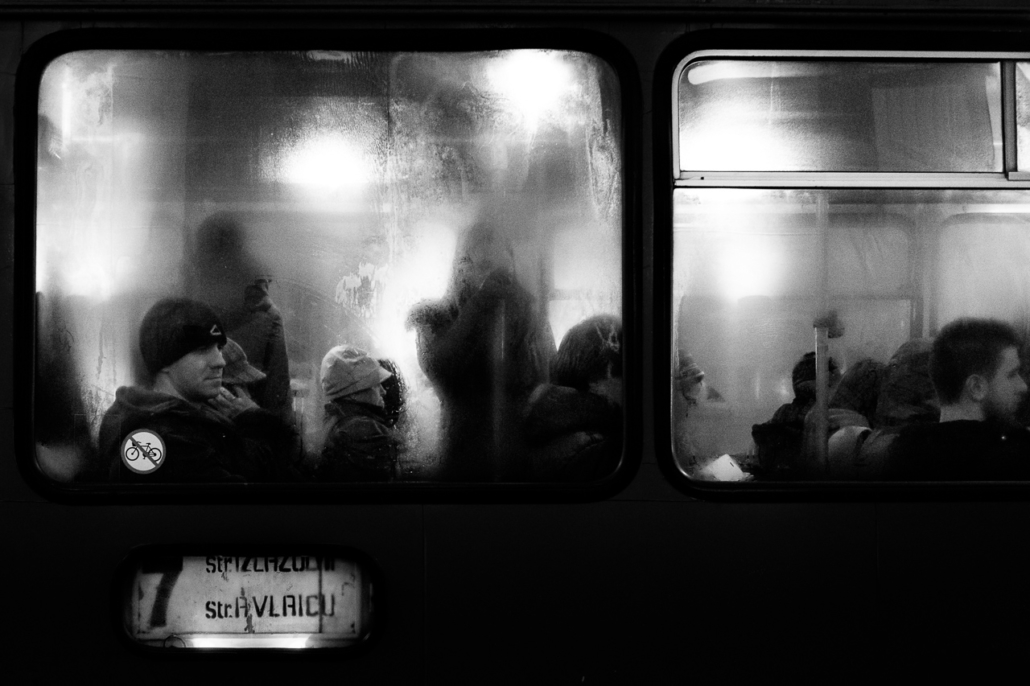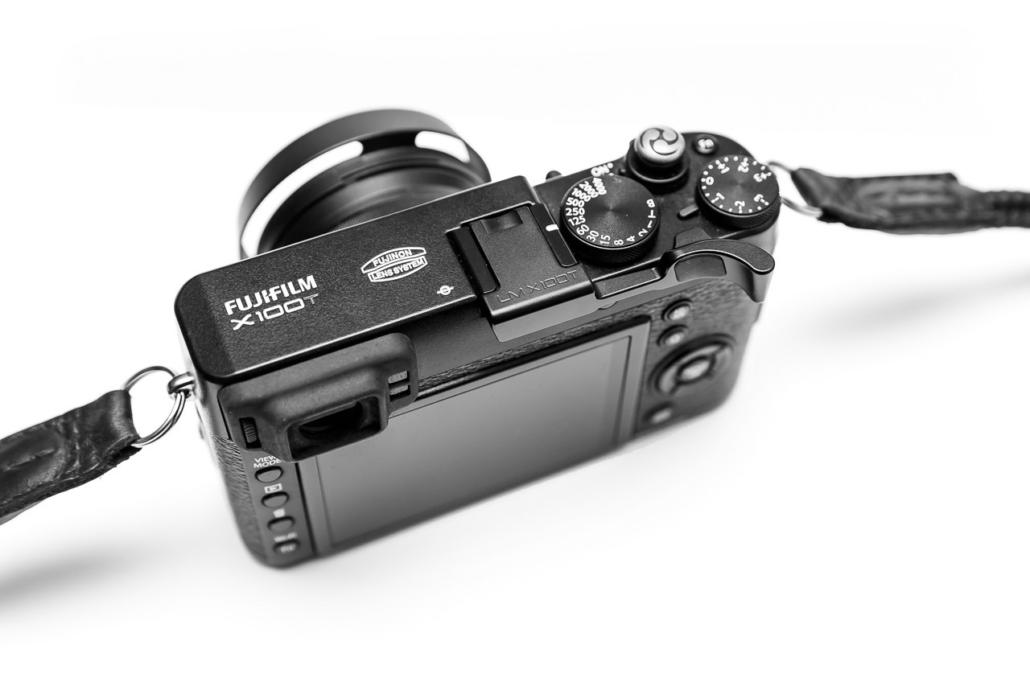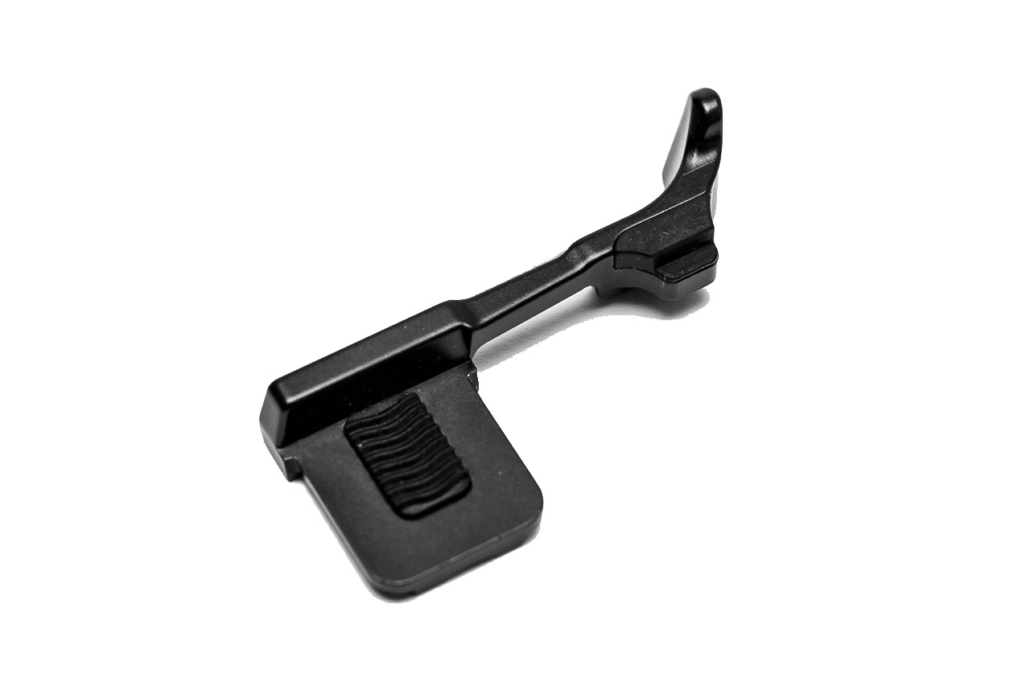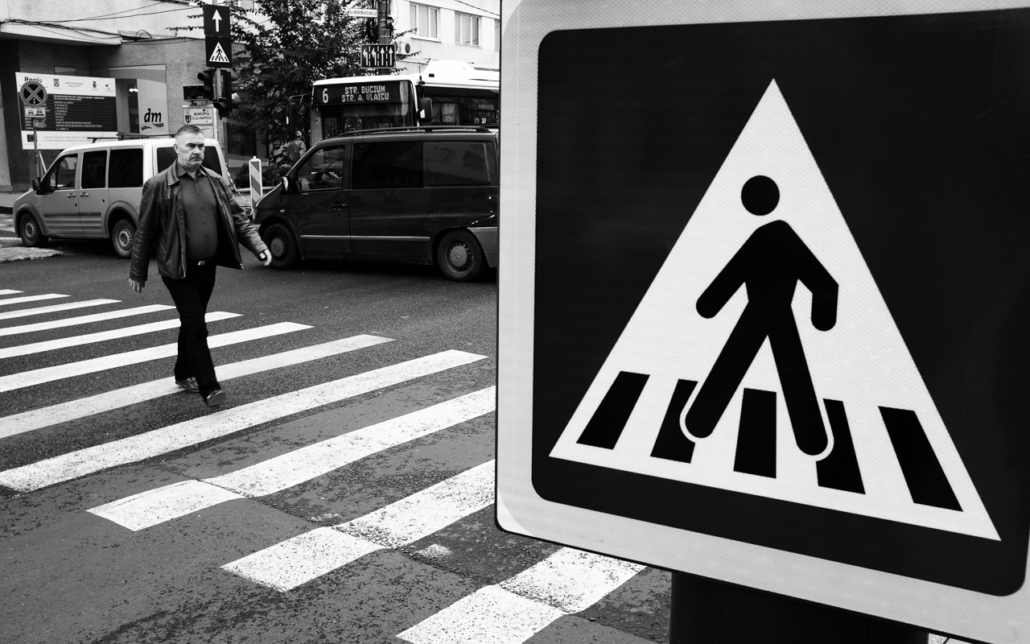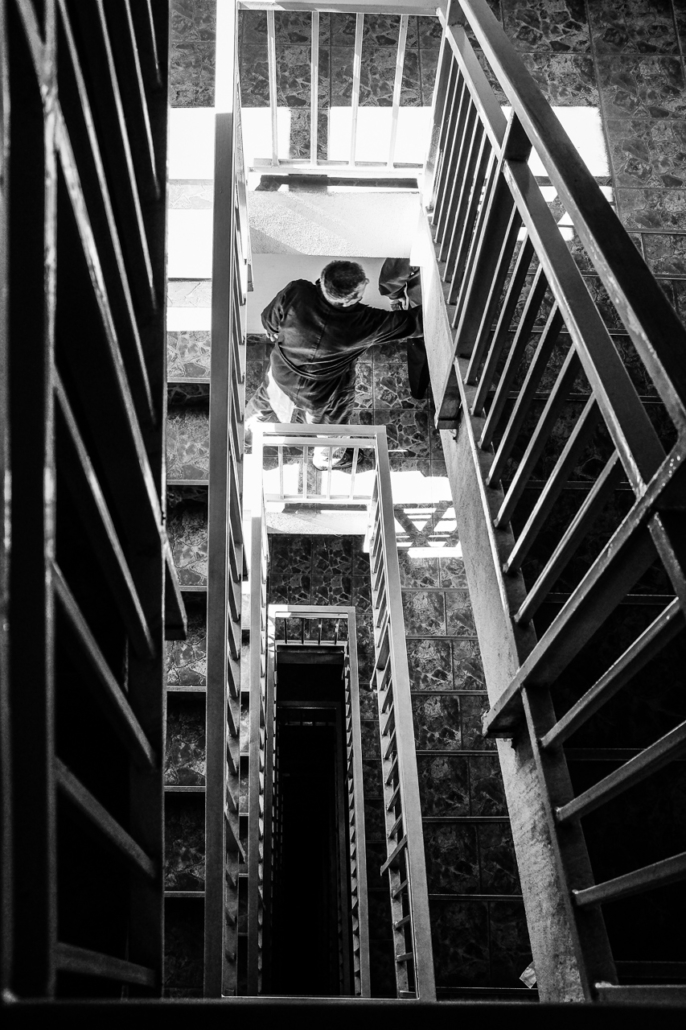Think different.
OK, I might be shamelessly stealing Apple’s famous slogan, but that’s truly how I feel about Fujifilm’s X100T.
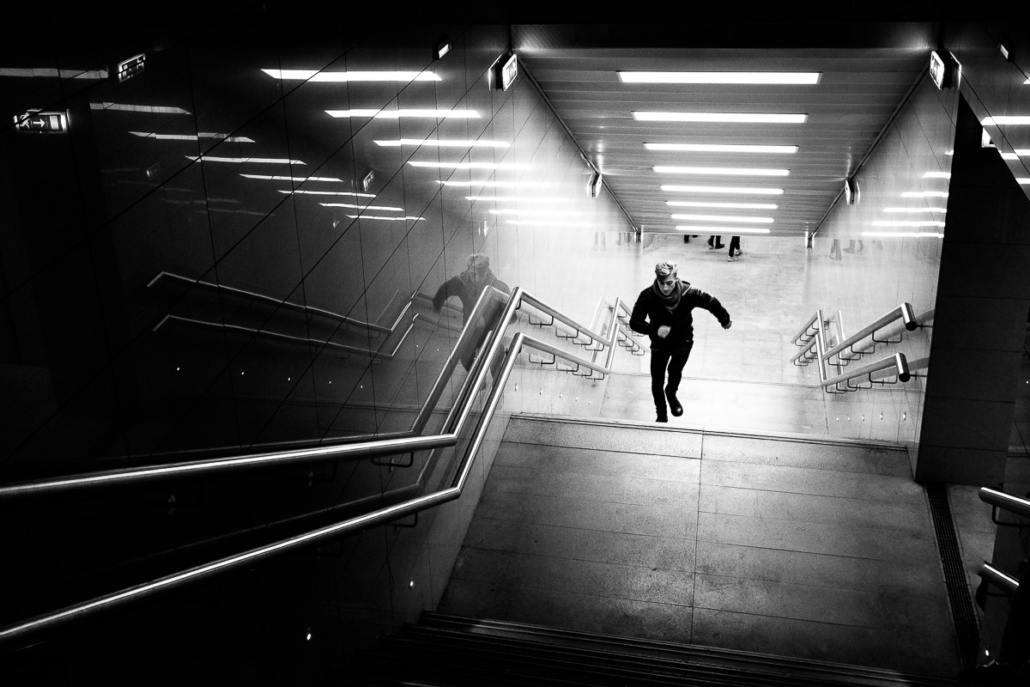
Run! – Fujifilm X100T – B&W simulation – f/2.8 – 1/125s – ISO 6400. Get an original, signed print in limited edition.
–
At the time I’m writing this article I’ve been using the X100T for 2 months. 2 months where my photography has changed, and hopefully improved, quite a bit.
I’ve been shooting for the last year mainly Canon DSLRs, with some incursions into the Nikon territory, always using the top-tier full frame gear. Image quality wise, nothing to say, great stuff, consistent results, what pros or serious amateurs want. You know your camera; it delivers the stuff without bad (or good) surprises. This setup has, at least for me, one drawback: it kind of lacks soul.
This is what struck me with the X100T: it doesn’t feel like a camera, it more feels like a photography companion, a friend that sticks with you and want to help you get different shots. The shooting experience is second to none, Fujifilm really did a photographers camera, not a geeky specs maxed out camera. Which is not necessarily a bad thing, when well executed.
Fuji’s approach in having the main controls directly accessible by hand (Aperture, Shutter speed and Exposure compensation) is a great idea. When using the X100T it feels like I’m back using my films cameras, where there is no menus, no screen full of information… It doesn’t mean Fujifilm’s camera isn’t packed of features, it just mean that there is no need to go thru the menus every second shot. It’s a much more tactile feeling that with the current DLSRs, something I am very sensible on. I like to touch things, have direct buttons and controls rather than browsing a screen.
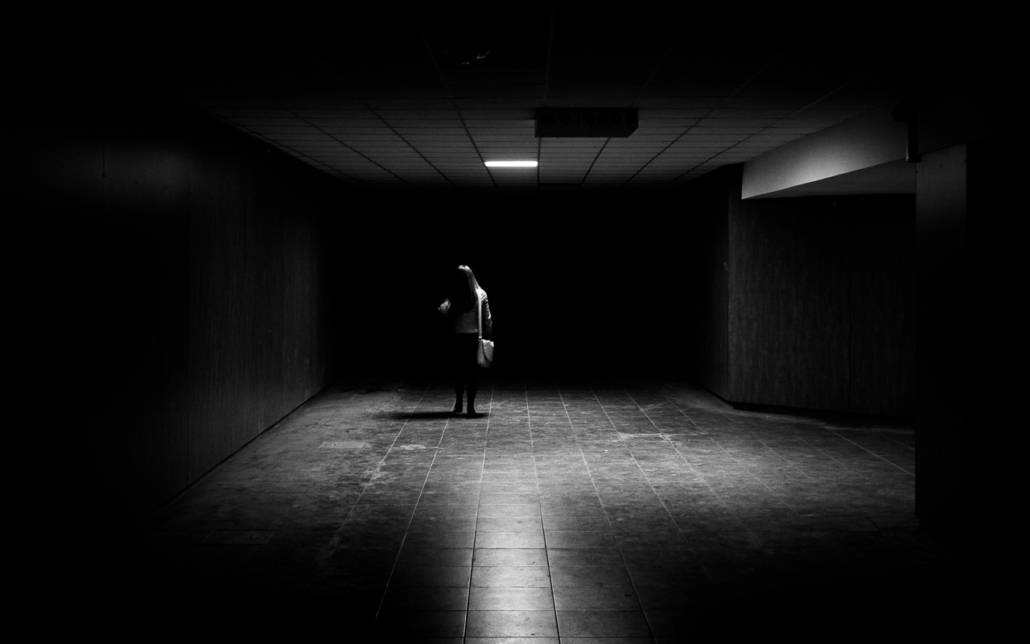
Strangers in the Dark I. Fujifilm X100T – f/2.8 – 1/60s – ISO 1600. Get an original, signed print in limited edition.
–
I usually just set my aperture, shutter speed and exposure compensation, and let the camera choose itself the ISO value. It has a very practical Auto ISO mode (actually, 3 modes) with minimum and maximum ISO values, as well as the slowest speed it can go if you let it have control of the shutter speed. In this setup I can forget the fact it’s a feature packed digital camera and browse the streets focusing on what’s happening, looking at nothing but my viewfinder. If I need to change a setting, it’s a wheel to rotate, nothing else. Just like a modern film camera.
The X100T packs Fujifilm’s X-Trans 16MP APS-C CMOS sensor. I must say I was a bit reluctant in going back to APS-C after years of full frame. I’m pretty please of the results: this sensor coupled with the 23mm f/2 lens (35mm equivalent in the full frame world) gives quite sharp pictures, with a very acceptable noise up to ISO 3200. ISO 6400 is still usable, but with less margin than a full frame camera such as my Canon 6D. Actually I like having a larger depth of field for street photography, so the APS-C sensor may actually be a plus for the X100T.
Strangely, I would say image quality doesn’t really matter for this camera. Its scope is not to replace my 6D in every single usage. Its scope is to be with me all the time, in my pocket, in my bag, everywhere I go.
Having a large camera taking awesome shots is great, but at some point you can’t have it with you all the time, you can’t be discrete with it. It’s big, heavy and cumbersome. Very often I didn’t take my large DSLR rig with me at events or party, having to rely on my phone or on crappy point and shoot camera, and missed awesome shots? Way too much. How often did I miss an incredible candid expression in the street because I got spotted in the last moment with my big camera? Yeah, you got the idea.

Baker Street Underground station. Fujifilm X100T – B&W simulation – f/4.0 – 1/60s – ISO 3200 – Get an original, signed print in limited edition.
–
While I know I may not get the ultimate image quality with this small camera, I know I’ll be able to get “good enough” shots in the very last majority of times, including shots I would have never had with my big rig. And that is priceless to me. That is a new way to take photographs, being and feeling always ready to shoot. It keeps me more alert in the streets, more attentive to details, colors and contrast.
That’s where I feel I’ve improved my photography in the last weeks. I’ve went from capturing a scene in a very clinical way, searching for maximum sharpness and having the frame full of details, to something a bit more abstract, less “ultimate image quality” oriented to a more “feeling” oriented photo. Exact like how I feel when using my Canon 6D versus my Fuji X100T.
And the funny thing is all of that… is that every single photographer that have used my camera in the last weeks have all felt the same way 🙂
One last thing… for the first time in years I’m comfortable shooting JPEGs. Fujifilm has done an incredible work having a reliable auto white balance, and pretty awesome film simulations giving a great look and the correct dose of instant gratification on any shot you’ll take. You can even bracket the simulations and decide later what to keep. The simulations are also available as camera profiles in Adobe Lightroom, so even if I shoot RAW I can process them much faster than the Canon RAWs. In general, I feel that the Fuji RAWs are easier to process than Canon RAWs.
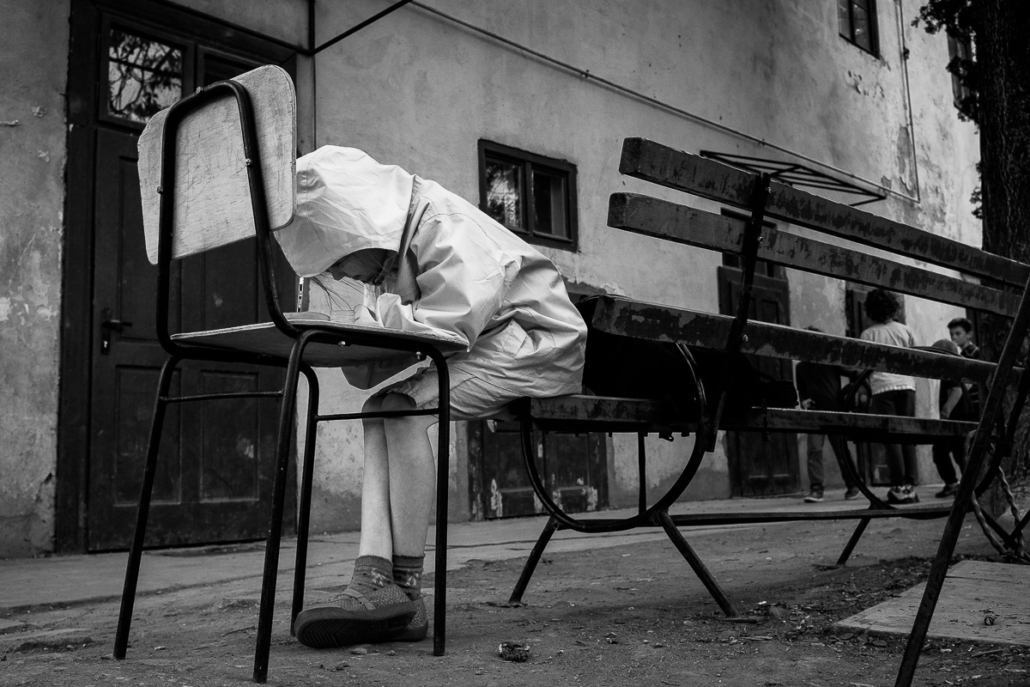
Little girl. Fujifilm X100T – f/5.6 – 1/500s – ISO 1600 – Get an original, signed print in limited edition.
–
Of course, not everything is perfect. The battery life is ridiculously short; it’s like when I got my first smartphone, always looking for a plug to charge it! Hopefully it can charge via USB, so I don’t need to take the external charger with me. But I know that for a walk of more than half a day I need a second battery.
My second regret is the choice of a focus by wire for its lenses. I just don’t like the feeling of it, without beginning or end, without depth of field scale. I enjoy zone focusing for my street shots and I can’t do it without looking at a screen. However, manual focus is a child’s game thanks to the hybrid viewfinder and the focus peaking with zoom on the focus zone.
Last regret, that its lens is not a 50mm equivalent, which is ma favorite focal length. At least this way, at 35mm equivalent, it gains versatility. And there are the two 28mm and 50mm equivalents you can screw on the filter thread, if needed. But it adds to the bulk, so no way for me, for now.
So, in the end, I’m really pleased with my experience with the Fujifilm X100T (if it wasn’t obvious already J). It has become like an extension on my right hand, it’s my photography companion that is always there for me. It’s often called the “poor man’s Leica”… let’s say I’m glad I’m a poor man! And last but not least, I feel like a better photographer, which is pretty much every photographer’s goal, no?
Edit: The X100T gets even better for me with the addition of a Lensmate Thumbrest!

Dutch angle – Fujifilm X100T – f/5.6 – 1/500s – ISO 320 – Get an original, signed print in limited edition.
–
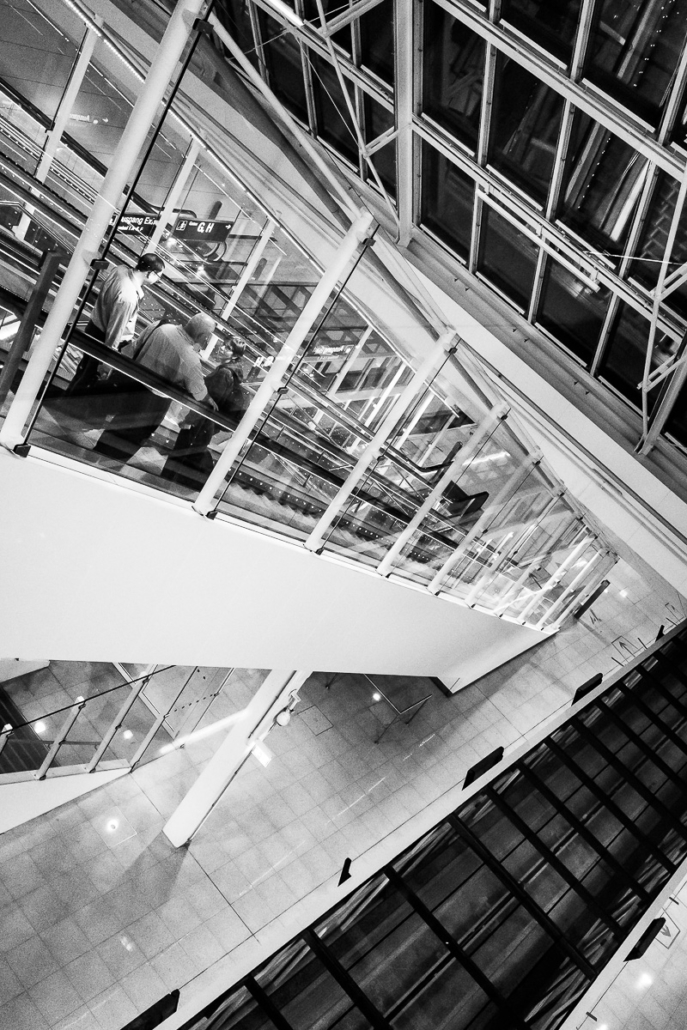
Airport stairs – Fujifilm X100T – f/8.0 – 1/125s – ISO 6400. Get an original, signed print in limited edition.
–
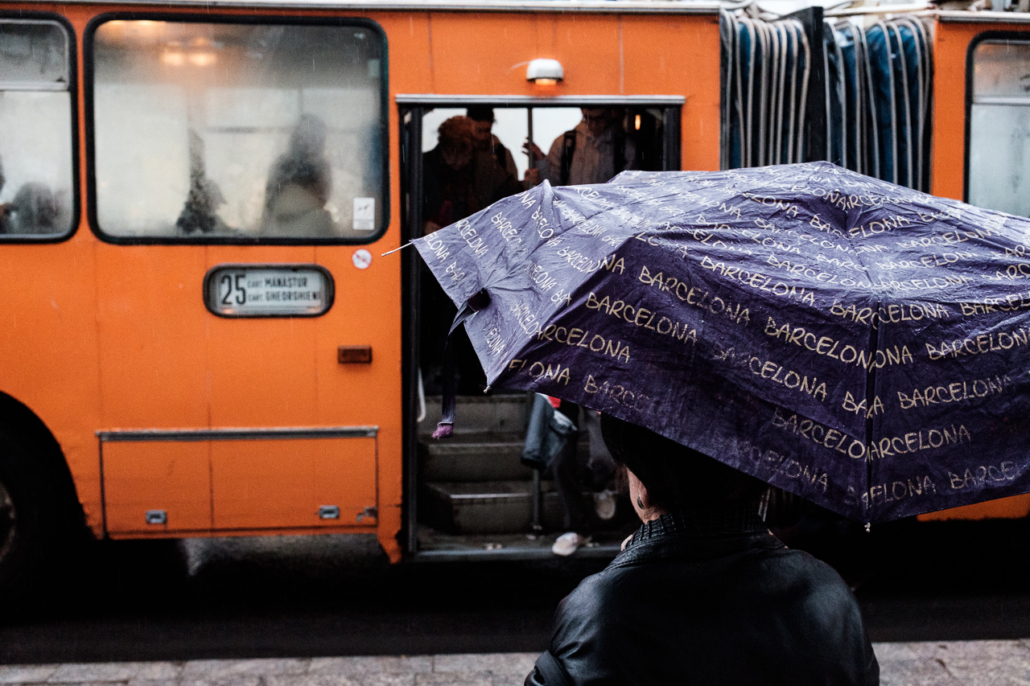
Barcelona. Fujifilm X100T – Classic Chrome film simulation – f/5.6 – 1/250s – ISO 6400
–
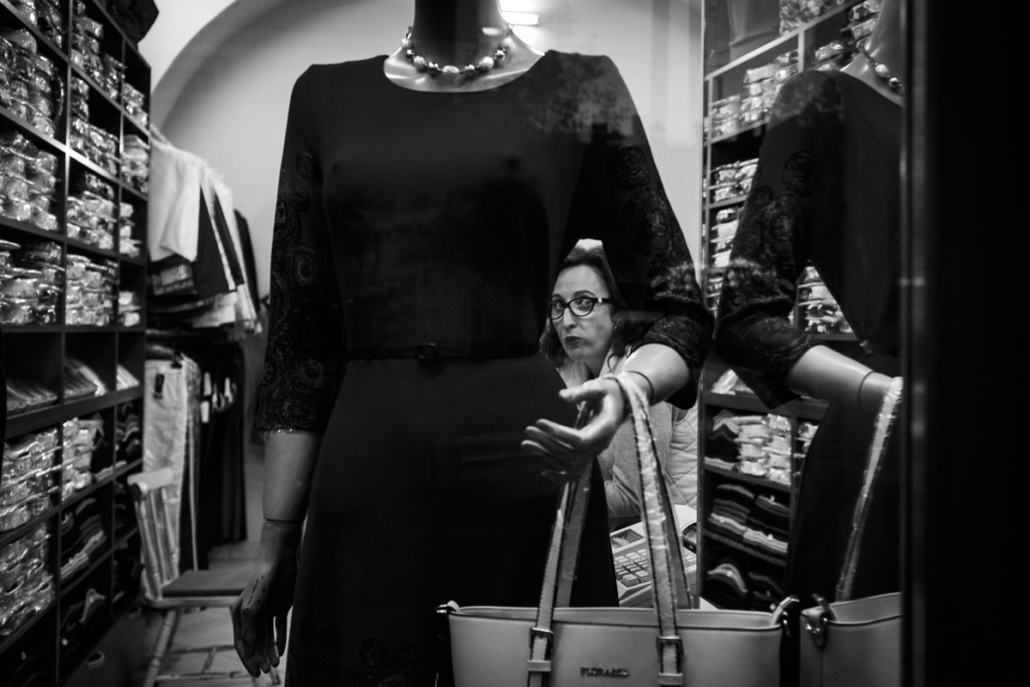
Surprise! – Fujifilm X100T – B&W simulation – f/2.8 – 1/60s – ISO 1600. Get an original, signed print in limited edition.
–
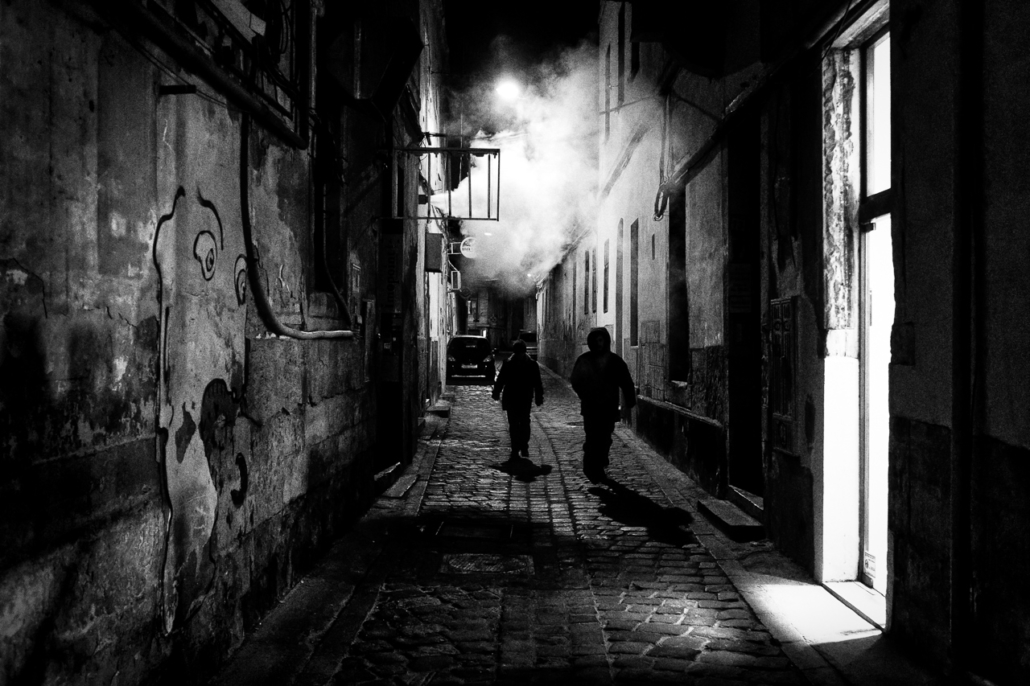
Strangers in the Dark III. Fujifilm X100T – B&W simulation – f/2.8 – 1/60s – ISO 6400. Get an original, signed print in limited edition.

